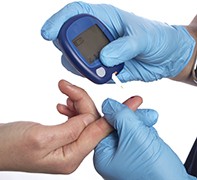Interpreting pathology tests: testing tests in clinical diabetes care
There is more to interpreting pathology test results than the listing on the pathology report indicating whether a test is positive or negative and which results are abnormal. The basic principles of interpreting pathology test results are summarised in this final article in a short series outlining a framework for such interpretation.
Reports from pathology laboratories tell us whether a test is positive or negative and which results are abnormal but there is more to interpreting results than this. For example, we may want to know if a test reported as positive is a true positive for the problem tested for or a false positive in someone without the problem, how abnormal an abnormal result is and whether a difference between consecutive results indicates a real change or background variability.
This article is the last in a short series about providing a framework for interpreting the results of pathology tests. A summary of the principles discussed in the previous articles is given in Box 1, and a case study is presented to illustrate the use of the framework in practice.
Picture credit: © FGorgun/iStockphoto.

